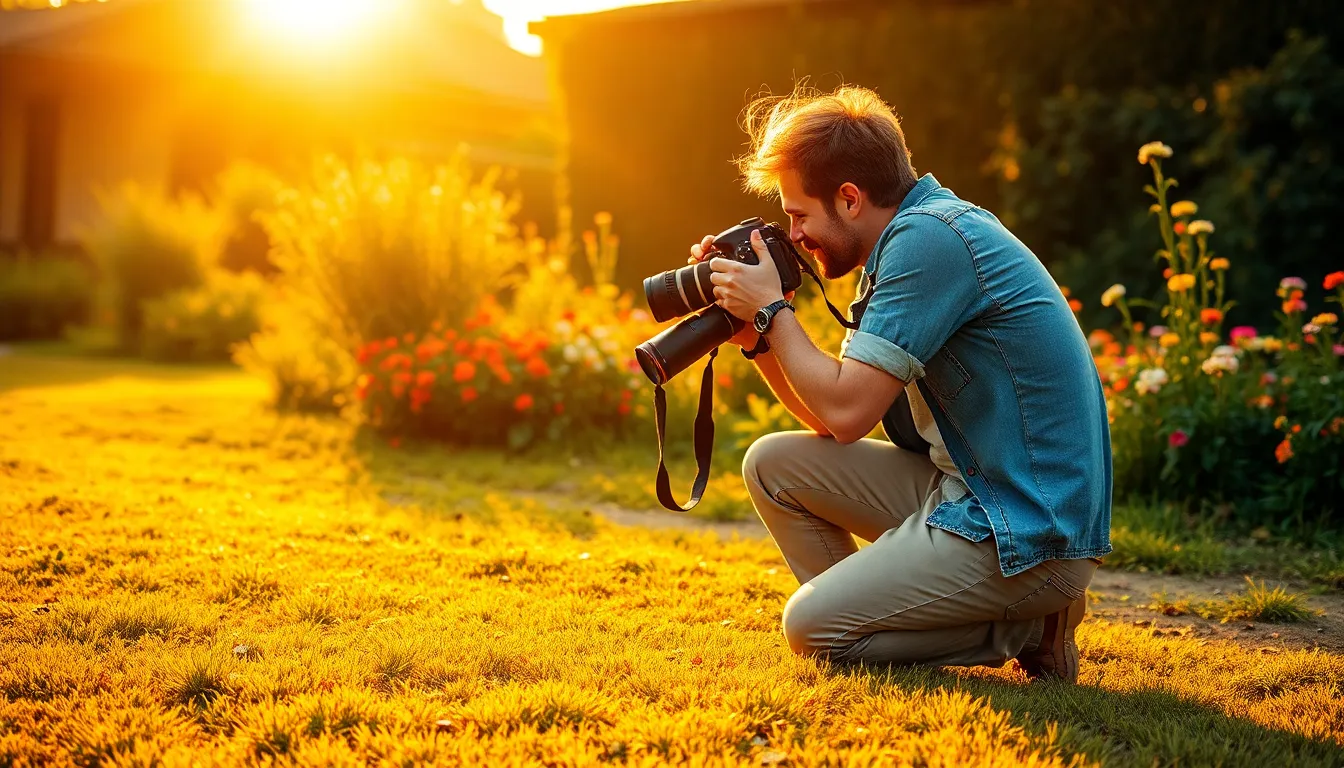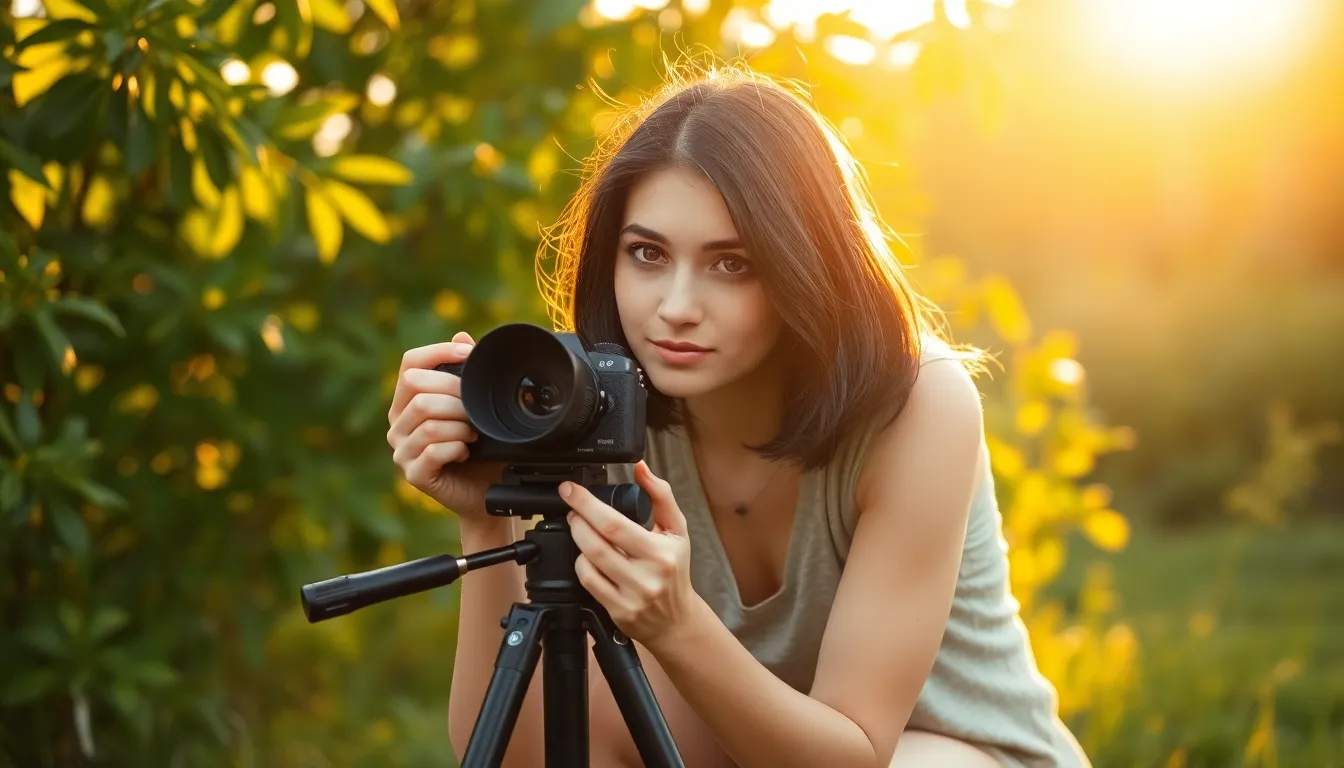In a world overflowing with images, understanding the art of photography goes beyond just snapping a picture. It’s like trying to decipher a secret language where light, composition, and emotion collide. Whether it’s a stunning landscape or a candid moment, every photograph tells a story, and analyzing those stories can unlock a treasure trove of insights.
Imagine diving deep into the layers of a photograph, uncovering the hidden techniques that make your heart skip a beat. From the perfect angle to the play of shadows, photography analysis transforms the way one sees the world behind the lens. So grab your magnifying glass and your sense of humor; it’s time to explore the fascinating realm where artistry meets technique and every click of the shutter becomes a lesson in visual storytelling.
Table of Contents
ToggleUnderstanding Photography Analysis
Photography analysis evaluates visual elements that shape a photograph’s impact. This process uncovers techniques that contribute to storytelling and emotional resonance.
Definition of Photography Analysis
Photography analysis involves a critical examination of photographs to identify the components that create meaning. This includes assessing aspects such as composition, lighting, and subject matter. Through analysis, photographers gain insights into their work and develop a deeper understanding of visual language. Observing how these elements interact provides clarity on the intended message. Each photograph serves as a case study, revealing artistic choices that result in distinctive narratives.
Importance in Photography
Understanding photography analysis enhances a photographer’s skills and vision. It fosters awareness of equipment settings and environmental conditions that influence each shot. Recognizing the significance of composition aids in creating visually appealing images. Analyzing photographs also informs photographers about emotional triggers that engage viewers. Furthermore, this practice promotes a critical perspective, enabling photographers to appreciate the nuances of their craft. Through continual analysis, artists evolve their techniques and refine their storytelling capabilities.
Components of Photography Analysis

Analyzing photographs involves understanding several key components that contribute to their overall impact. Exploring these elements enhances both the appreciation of photography and the ability to create compelling images.
Composition
Composition focuses on how elements are arranged within the frame. It includes aspects such as balance, symmetry, and the rule of thirds. Effective composition guides the viewer’s eye and creates visual interest. Techniques like leading lines and framing can draw attention to the subject. Thoughtful arrangement enhances storytelling, allowing emotions to surface more readily. Photographers often experiment with various compositions to find the most effective way to convey their message.
Lighting
Lighting plays a crucial role in photography analysis. Various types, such as natural or artificial light, affect the mood and tone of an image. Direction, intensity, and quality of light influence the overall aesthetic. Photographers often utilize golden hour light for its warm tones or harsh midday sun for dynamic shadows. Understanding how to manipulate light helps create depth and dimension within the photograph. Adjustments to lighting conditions can significantly change a photograph’s emotional resonance.
Color Theory
Color theory impacts how viewers perceive a photograph. Different colors evoke various emotions and convey specific messages. For instance, warm colors often signal energy and passion, while cool colors evoke calmness and serenity. Combinations such as complementary or analogous colors enhance visual harmony. Photographers make conscious choices about color palettes to reinforce the narrative within their images. Awareness of color psychology allows artists to connect with their audience on a deeper emotional level.
Techniques for Effective Photography Analysis
Effective photography analysis requires an understanding of both technical aspects and emotional responses. Evaluating these components elevates a photographer’s ability to connect with their audience.
Technical Assessment
Technical assessment focuses on the fundamental elements of photography. Examining factors like exposure, focus, and composition reveals the photograph’s quality. Proper exposure ensures details are visible across highlights and shadows. A sharp focus directs attention to the primary subject, enhancing engagement. Additionally, composition techniques such as the rule of thirds guide viewer perception and strengthen storytelling. Photographers benefit from scrutinizing these technical elements, as mastery fosters intentional image creation.
Emotional Response
Emotional response reflects the viewer’s feelings toward a photograph. Analyzing how lighting and color choices evoke specific emotions proves crucial. For instance, warm tones can elicit feelings of comfort, while cooler shades might generate tranquility or sadness. Similarly, lighting dramatically influences mood; soft, diffused light often creates intimacy, whereas harsh light can produce tension. Recognizing these emotional triggers enables photographers to craft images that resonate on a deeper level, ultimately enhancing their visual narratives.
Tools for Photography Analysis
Various tools enhance photography analysis. These resources facilitate deeper insight into visual elements and improve skills.
Software and Apps
Numerous software options assist photographers in analysis. Adobe Lightroom offers powerful tools for adjusting exposure, color grading, and cropping. Capture One provides advanced color correction and tethering features, allowing for precise adjustments. VSCO presents filters that emulate classic film looks, helping photographers explore varying aesthetics. Snapseed, a mobile app, gives easy access to editing tools and allows for selective adjustments. Each of these applications aids in understanding how manipulation affects visual storytelling.
Online Resources
Several online resources exist for comprehensive photography analysis. Websites like Photographic Society offer tutorials and articles on composition, lighting, and editing techniques. Forums such as 500px allow sharing and critiquing photographs, fostering community feedback. YouTube hosts countless channels dedicated to photography insights, including gear reviews and editing tips. Additionally, blogs focused on photography provide expert opinions, gear evaluations, and case studies of successful images. Each resource contributes valuable learning opportunities for photographers looking to refine their craft.
Photography analysis opens a world of possibilities for both aspiring and seasoned photographers. By examining the intricate elements that shape a photograph’s impact, they can elevate their craft and storytelling abilities. Understanding composition lighting and color theory not only enhances technical skills but also deepens emotional connections with viewers.
Utilizing tools and resources available today allows photographers to refine their techniques and gain fresh perspectives. Embracing this analytical approach fosters growth and creativity in their work. Each photograph becomes a canvas for exploration and expression inviting photographers to continuously evolve and engage their audience on a profound level.



